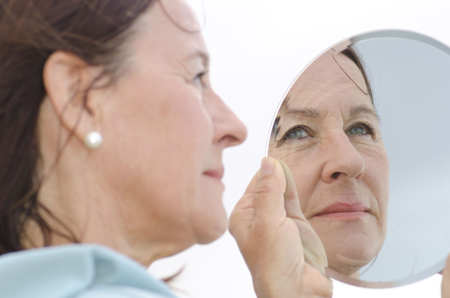Body Image Healing as a Cancer Survivor

Body image is a complicated subject. Instilled at a young age, we become aware of our bodies, how we feel in our skin, what makes us who we are, and how we want others to perceive us. Personal body image evolves throughout our lives and can be affected by any number of events or situations—puberty, pregnancy, age, and health. So what does body image and acceptance look like for you as a cancer survivor?
Cancer and its treatments affect each patient differently and may include:
- Temporary or permanent hair loss
- Weight gain or loss
- Scarring
- Loss of limbs, organs, or breasts
- Changes in physical and sexual abilities
- Infertility/Menopause
- Swelling
- Changes in skin and nails
Why is Body Image Important?
With physical changes, comes emotional consequences. Just like the many stages of the cancer journey, there are many stages of emotions to navigate. How you view your body affects everything from your own self-esteem to comfort level in relationships.
Nearly half of all cancer survivors struggle with changes in body image, and yet many minimize body image issues because of shame and embarrassment. The first step in dealing and healing is to acknowledge that body image concerns are normal.
Negative Body Image Factors
The initial cancer diagnosis can be shocking, and your only focus will most likely be survival. But what happens when you have to start living? After treatment, the reality of living with the changes in your body can turn into a negative self-image. A few signs of a negative body image:
- Dissatisfied with appearance
- Avoiding the mirror
- Preoccupation with physical flaws resulting from cancer and treatment
- Avoiding social situations
- Relationship distress
- Intimacy issues
- Obsessive behavior regarding appearance fixing
- Distress, anxiety or depression resulting from body image perception
What Now?
You have identified that you are heading down the dark path to negative thoughts, but what can you do about it?
- Get comfortable telling your story-educate yourself on your diagnosis, the consequences of your treatment and any risks that may arise.
- Know that grief is possible and is nothing to be ashamed of. Identify the areas of grief that you may need to work on.
- Evaluate toxic thoughts. Negative thoughts lead to negative feelings and behaviors. If you can identify that first negative thought, you have the opportunity to create positive change. Offer a positive counter thought or positive behavior to combat negative feelings and build self-esteem.
Building Self-Esteem
- Find three things every morning that you like about yourself (mirror exercise).
- Practice Positive Affirmations
o “I accept my body, I will do everything I can to love
and help it heal.”
o “My body supports my healing process.”
- Take time to get to know your body.
o Touch your scars in the bath.
o Find out what does and doesn’t feel good.
- Learn to laugh at some of the changes. Humor is healing and attractive.
- Surround yourself with positive, supportive people.
- Make a list of your past successful relationships – not based solely off of how you look.
Support and Resources
Dealing with body image issues and their emotional impact does not need to be a lonely process. Identify your goals and your struggles with your health care team. They can connect with counseling for ongoing support or refer you for other medical or surgical interventions. Talk with others who have been in similar situations and can support positive thinking. You are in charge of yourself – your thoughts, your environment and your body. Be patient with the changes and explore options for improvement. And allow time to adjust. It takes time to adapt so treat yourself with compassion and kindness.
Resources: American Cancer Society, Cancer.net
